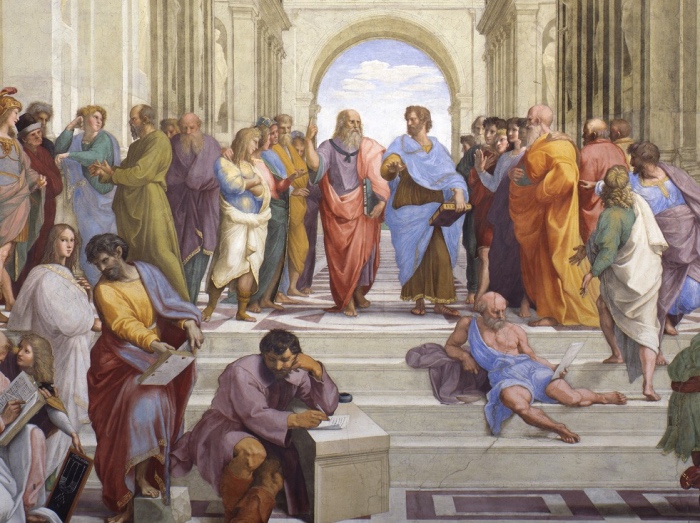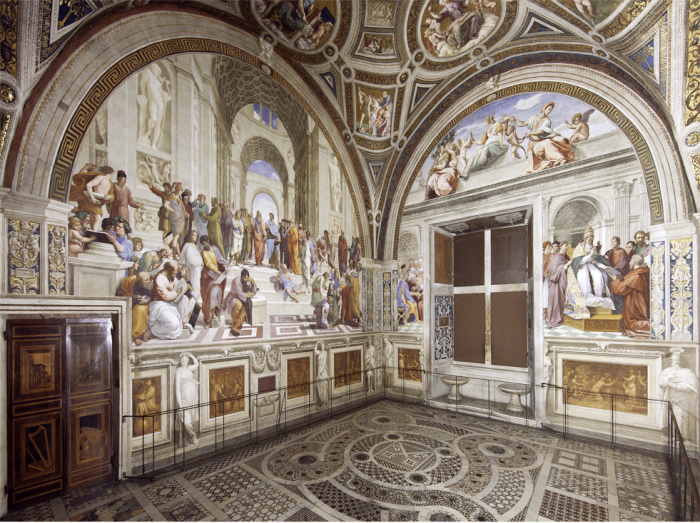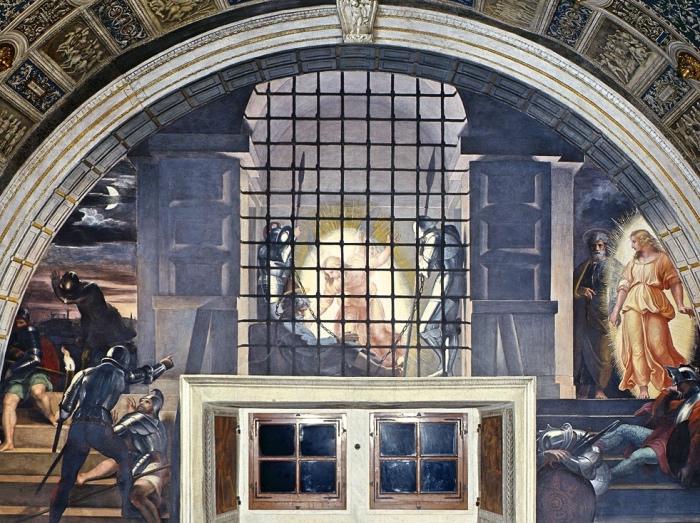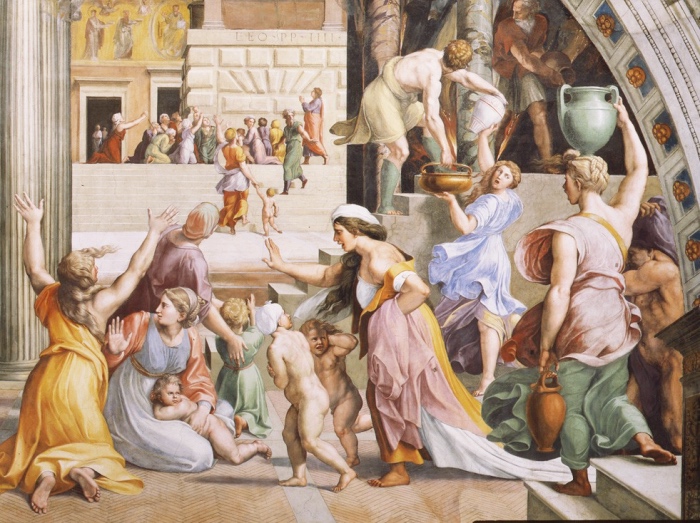
RAPHAEL ROOMS: 5 THINGS TO KNOW ABOUT THE ROOM OF THE SIGNATURA
Have you ever seen Raphael Rooms?
If you happened to be in front of the fresco “The School of Athens” or the “Deliverance of Saint Peter”, I am certain that you remained open-mouthed and looked upwards for a long time.
It happened to me and, in front of those masterpieces, I thought that everybody should admire Raphael Rooms at least once in the lifetime.
Here are 5 things to know about Raphael’s most beautiful and important paintings.
Raphael Rooms

1. HOW MANY RAPHAEL ROOMS ARE AND WHERE THEY ARE LOCATED
Raphael Rooms were originally five rooms, commissioned by Pope Julius II, and were home to the offices and the Papal court.
Today only four rooms have survived, because the fifth was modified, in the mid-16th century, with the substitution of the decorative frescoes.
Raphael Rooms are located inside the Vatican Museums, so to admire them you need to go through almost all the areas of this place full of masterpieces.
2. RAPHAEL ROOMS: THE ROOM OF THE SIGNATURA
This was a private room of the Pope and the frescoes, painted between 1508 and 1511, celebrate Truth, Good and Beauty.
The School of Athens is probably the most famous fresco where Raphael portrays the most important philosophers and thinkers of antiquity, among whom you can recognize Plato, in the centre, Aristotle and many more.
The philosopher Heraclitus has the facial features of Michelangelo Buonarroti, who in that period was decorating the Sistine Chapel; while Raphael appears, in his black hat, in a self-portrait on the right.
3. RAPHAEL ROOMS: THE ROOM OF HELIODORUS
The Room of Heliodorus was originally intended for Pope’s private audience and the artist worked on this room from 1511 to 1514, which celebrates God’s protection over the Church. For this reason Raphael frescoed some scenes from historic events, such as the Expulsion of Heliodorus from the Temple, which gives the name to the chamber.
In fact, the fresco illustrates the biblical episode where Heliodorus, trying to seize the treasure preserved in the Temple of Jerusalem, is stopped thanks to God’s intervention.

Deliverance of Saint Peter
4. RAPHAEL ROOMS: THE ROOM OF THE FIRE IN THE BORGO
At the beginning this Room was used for the meetings of the highest court of the Holy See, and later the Room became a dining room.
Raphael was commissioned to fresco the walls by depicting scenes from the lives of Popes Leo III and Leo IV, predecessors of Leo X who inspired his political aspirations.
The Room is named after the painting of the Fire in the Borgo.
It’s the tale of the fire which raged in 847 in front of Saint Peter’s Basilica and was extinguished thanks to the blessings pronounced by Pope Leo IV (Pope from 847 to 855), saving the people and the church.
5. RAPHAEL ROOMS: HALL OF CONSTANTINE
The Hall of Constantine was the place designed to be used for receptions and official ceremonies.
Raphael was commissioned the work in 1519, but he wouldn’t see it finished because he died the following year (on April 6th 1520).
For this reason the Hall was completed by his assistants that followed the design of the master, dedicated to Emperor Constantine, the emperor who granted the Christian faith freedom of worship.

The Fire in the Borgo
READ ALSO – What to see inside the Vatican Museums

